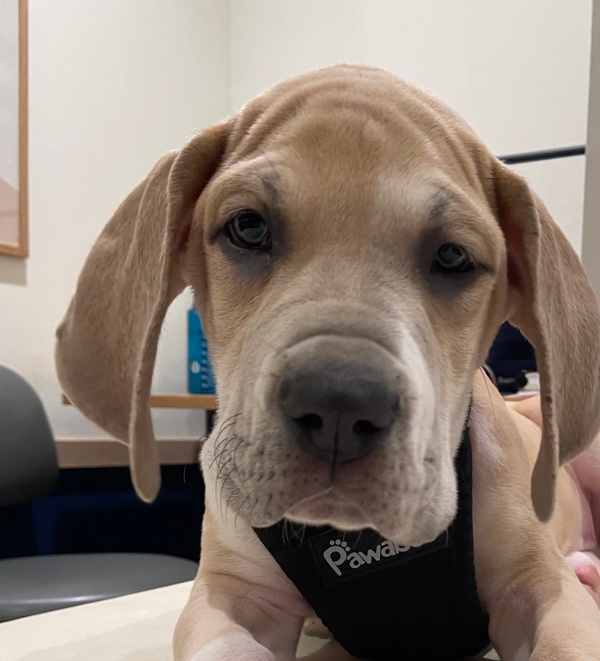
Can my pet get monkeypox?
Now that cases of human-to-dog transmission of monkeypox have been reported, pet parents everywhere are experiencing a host of new anxieties. So many questions arise — how can you stay safe? What are symptoms in pets? How do we protect ourselves and our pets? We have answers. First, let’s start with the basics.
What is monkeypox, and how does it spread?
Monkeypox is a rodent-based virus, so once a certain number of humans became infected, it was only a matter of time until it spread to a small, domestic animal (in this case, a dog).
The dog reportedly infected with monkeypox is an Italian greyhound in France, who’s believed to have contracted monkeypox from his owners, both of whom had the virus and shared a bed with the dog. The dog presented with pustules on the lips, abdomen, and anus about 12 days after its owners became symptomatic.
Infected animals can spread monkeypox virus to people, and infected people can spread monkeypox virus to pets through close contact, including cuddling, petting, licking, sharing food, and sharing sleeping areas. This long incubation period is especially concerning — both people and animals can be sick and contagious with monkeypox for 21 to 28 days, a long time to quarantine, whether animal or human.
However, despite this reported transmission, the World Health Organization states there is little concern overall for household pets, and that while people should continue to be vigilant in preventing the spread of monkeypox, pets are not at significant risk for monkeypox.
What safety measures can you take for you and your pet?
As monkeypox is a developing situation, we are bringing you information as it becomes available. While risk factors, new and developing information, and the general unknowns surrounding monkeypox can change our recommendations, here are some great general guidelines for keeping yourself and your pets safe:
If you are in a high-risk community and are not vaccinated, don’t share a bed with your pets, don’t allow your pet to lick your face or hands, and do your best to avoid close, physical contact — and be sure to wash your hands frequently
Isolation from your pet is an option, but this can be tricky to execute. If you are certain your pet has not yet been exposed, then this is the best way to keep everyone safe. However, be aware that moving a potentially exposed animal to a friend, neighbor or family member’s home risks exposing those caretakers
Contact with skin lesions is likely the bigger risk factor but we can’t yet rule out infection through other types of contact, such as aerosols (droplets in the air). To that end:
Do not expose pets to infected lesions and keep skin covered when possible
Do not let your pets on furniture, which can serve as a fomite
Limit your time with the animal as much as possible – it’s important the animal is well cared for while mitigating risk. If needed, consider wearing an N95 mask
Wash your hands, especially while handling food and water bowls
Open windows, use HEPA air filters and maintain good ventilation
What to do if you’re diagnosed with monkeypox
If you are diagnosed with monkeypox, the CDC guidelines are to:
Avoid contact with animals, including pets, to prevent spreading the virus
Consider asking a friend or family member who lives in a separate home to take care of your pet until you are recovered, if your pet hasn’t already been exposed to you after the onset of symptoms
Keep a pet that has had close contact with an infected person at home and away from other people and animals for 21 days after the most recent contact — if possible, infected people should not take care of exposed pets
Caring for your pet if you have monkeypox
If you have monkeypox and must care for your pet during home isolation, the CDC recommends that you:
Wash your hands or use hand sanitizer before and after caring for your pets
Cover any skin rash as best as possible with long sleeves, pants, etc
Wear gloves and a well-fitting mask or respirator when caring for your pets
Do NOT put a mask on your pet
Avoid close contact with your pet
Do not allow your pet to come into contact with contaminated materials such as clothing, bandages, or linens used by an infected person
It’s important for us to remember when dealing with zoonotic illnesses (diseases that are transmissible from animals to people) that spillover is not an isolated event. When a virus can adapt and find other reservoirs, it makes it difficult to control, and this situation in France is unlikely to be isolated. We saw this type of zoonotic transmission with COVID in deer and mink, but now we are talking about transmission with domesticated animals who have constant contact with humans.
We acknowledge that it’s impossible to completely eliminate risk, but any and all measures can help to mitigate exposure and risk. Reach out to your veterinarian with any questions or symptoms in your pet.